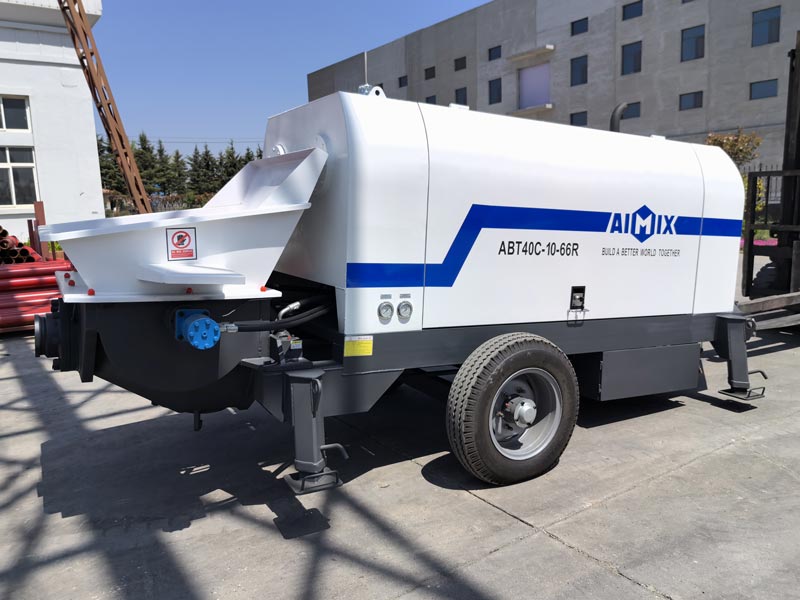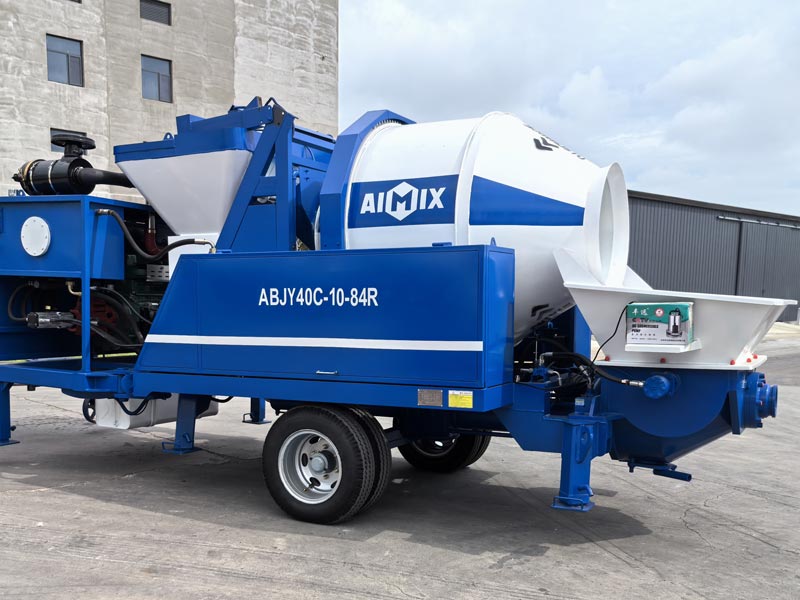When purchasing a concrete pump, many buyers initially focus on the concrete pump price. However, the price tag only tells part of the story. The true cost of ownership includes everything from fuel efficiency and maintenance to downtime and eventual resale value. To make the smartest investment, construction businesses need to conduct a full life cycle cost (LCC) analysis of their equipment.
What Is Life Cycle Cost Analysis and Why It Matters
Life cycle cost analysis is a method of evaluating all the costs associated with owning and operating a product over its entire useful life. For a concrete pump, this means looking far beyond the purchase price and considering operating costs, maintenance, service availability, spare parts, depreciation, and resale value.
Especially in regions like Latin America, where import duties, fuel costs, and parts availability vary widely, the life cycle approach is essential. Whether you’re comparing trailer concrete pump prices(precio bomba de concreto) or evaluating a small concrete pump for your urban project, total cost of ownership should guide your decision—not just the initial quote.

The Hidden Costs Beyond the Purchase
1. Operating Costs
Fuel and energy consumption are two of the most overlooked costs when buying a concrete pump. For example, a small concrete pump may look economical at first but can become a long-term burden if it consumes more fuel per cubic meter of concrete pumped. High-efficiency models might come with a higher upfront cost, but they often use significantly less diesel or electricity over time.
2. Maintenance and Spare Parts
Maintenance frequency, ease of service, and spare parts availability all impact ownership costs. A lower trailer concrete pump price(bomba estacionaria de concreto precio) may be attractive, but if replacement parts are expensive or hard to obtain, repair costs and downtime can eat into your profits. Additionally, pumps designed with modular or easy-to-access components can reduce service time and labor costs.
3. Downtime and Lost Productivity
When a pump breaks down, it’s not just a technical issue—it’s lost time and money. Downtime affects project timelines, increases labor hours, and may lead to penalties in contractual agreements. Choosing a brand with a reputation for durability and reliability may help minimize these risks. In some cases, paying slightly more upfront for a robust machine translates into better long-term productivity and lower failure rates.

Evaluating Performance and Job Suitability
A major part of cost-effectiveness is choosing the right equipment for the job. For example, a small concrete pump(bombas para concreto pequeñas) might be ideal for residential projects or narrow job sites where maneuverability is essential. On the other hand, for large infrastructure developments, you might require a high-powered trailer concrete pump with longer delivery distances and higher output.
Selecting equipment that’s either too small or overqualified can result in unnecessary expenses. Oversized pumps may require more fuel, while undersized models might lead to overwork and faster wear and tear. A proper match means greater efficiency and lower total cost per cubic meter of concrete placed.
Resale Value and Asset Depreciation
Don’t forget to consider what happens at the end of your pump’s working life. Well-maintained concrete pumps from reputable brands often retain significant value on the second-hand market. This resale value offsets your original investment and reduces your net cost of ownership.
Some factors that increase resale value include:
- Strong brand recognition
- Reliable service history
- Availability of original spare parts
- Minimal wear and tear from proper usage
Investing in quality pays off twice—first through performance and second through recovery value.
Regional Factors That Affect Long-Term Costs
In Latin America and other emerging markets, local conditions such as tax policies, import regulations, and infrastructure impact LCC significantly. For instance, a concrete pump that’s easy to service in Europe might be costly to maintain in Peru or Bolivia due to limited dealer networks or higher spare part shipping fees.
When comparing concrete pump price quotes, consider regional logistics. A trailer concrete pump price might be slightly higher from a brand with local support, but the cost of service delays from a foreign brand could make it more expensive overall.
Making a Smart Procurement Decision
Questions to Ask Before Buying
- What is the estimated total fuel consumption over the equipment’s lifetime?
- How accessible and affordable are replacement parts?
- What is the expected maintenance frequency and cost?
- Does the manufacturer provide local support or service training?
- What is the estimated resale value after 5–7 years of use?
Evaluating these aspects ensures that you don’t end up paying more in the long run for what seemed like a bargain. Ask your supplier to provide case studies, operational cost comparisons, and long-term support commitments as part of their proposal. Based on this, you can check AIMIX’s website for more information and more accurate quotes: https://aimixgrupo.com/
Conclusion: Look Beyond the Price Tag
In today’s competitive construction landscape, every peso or dollar matters. While the initial concrete pump price grabs your attention, it’s just the starting point. A thorough life cycle cost analysis helps you uncover the true financial impact of your investment—from operation and maintenance to downtime and resale.
Whether you’re considering a high-end trailer concrete pump or a compact small concrete pump, making decisions based on full life cycle value ensures greater ROI and operational success. Always remember: a cheaper price today may cost you more tomorrow.
